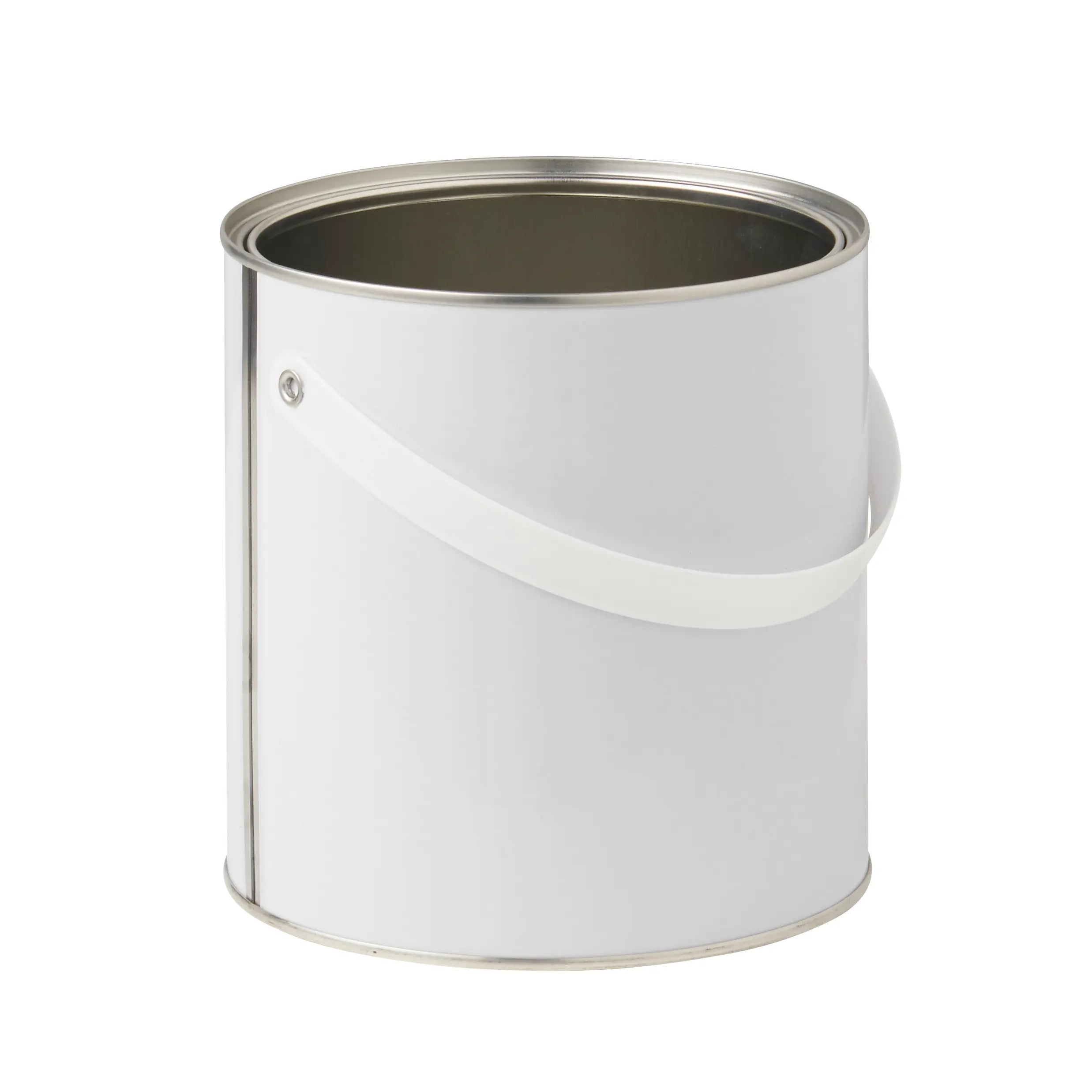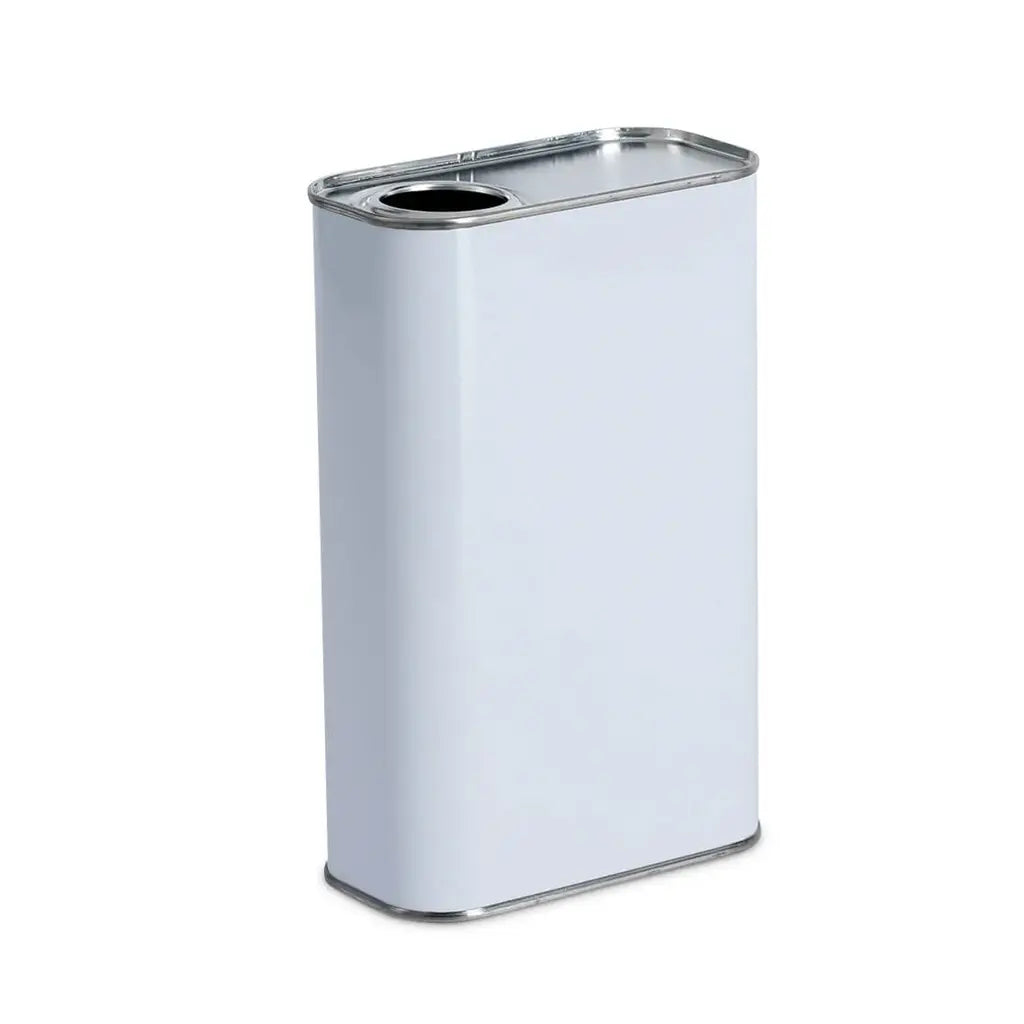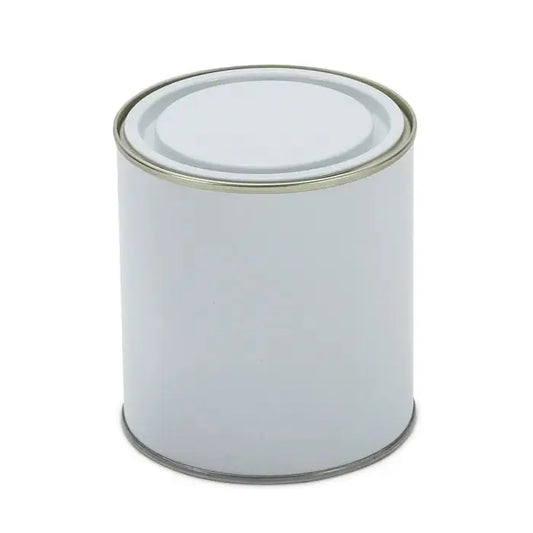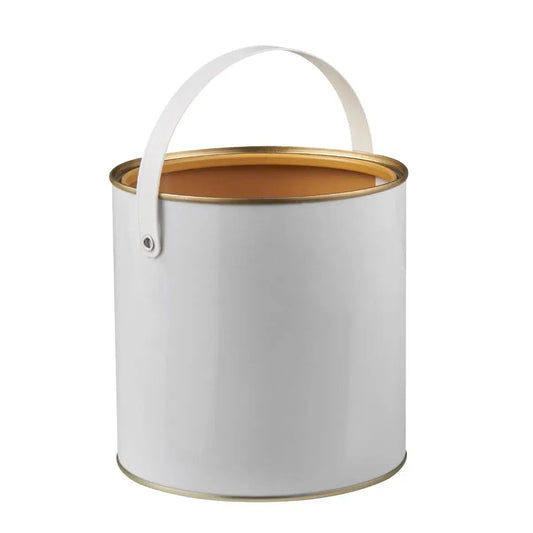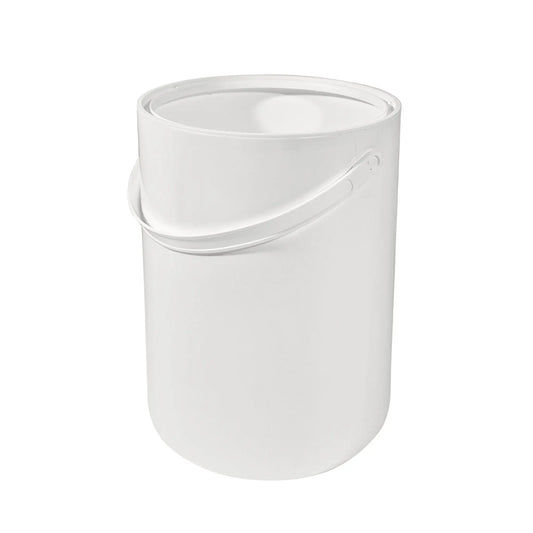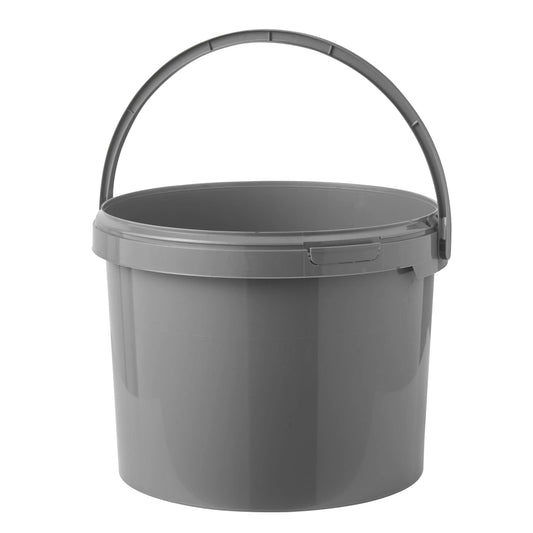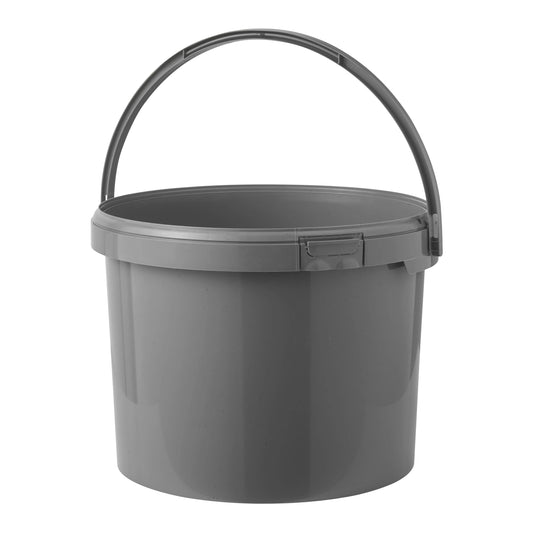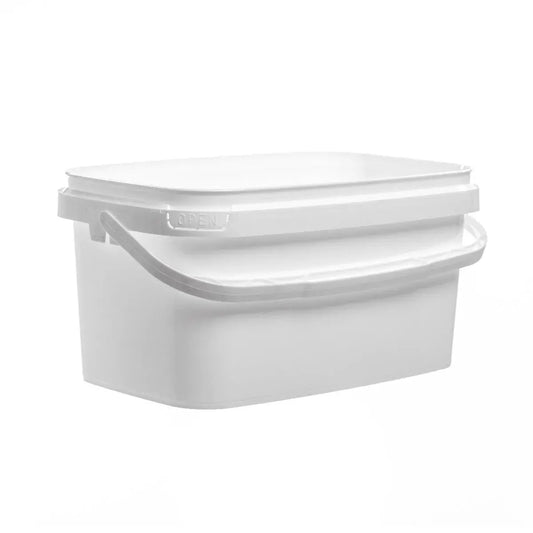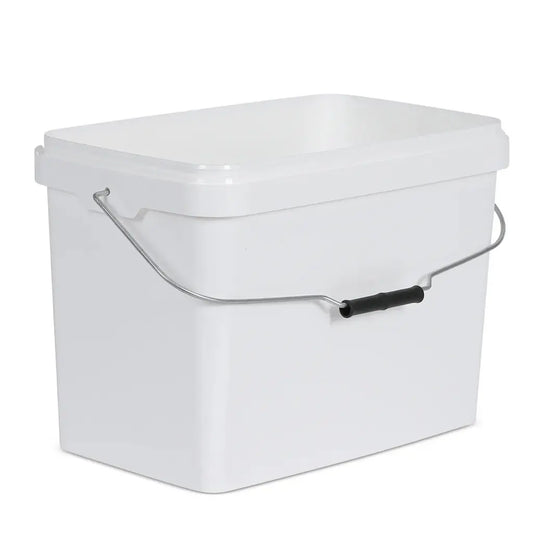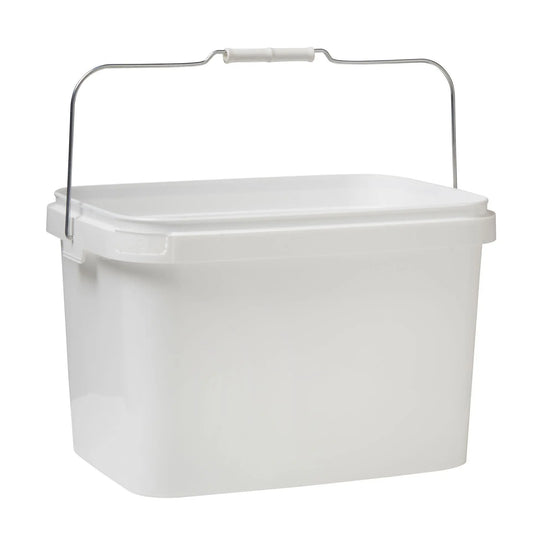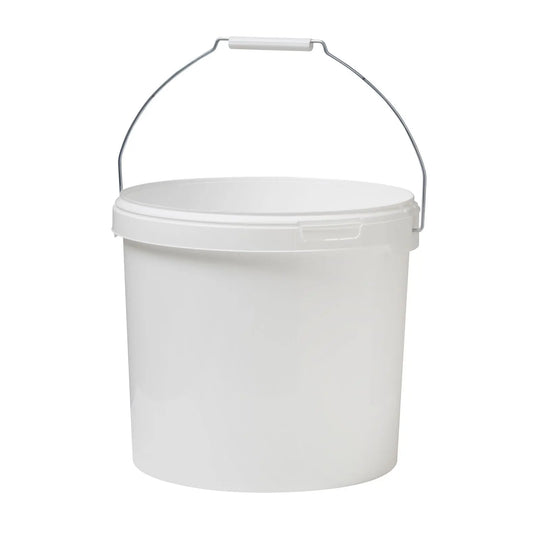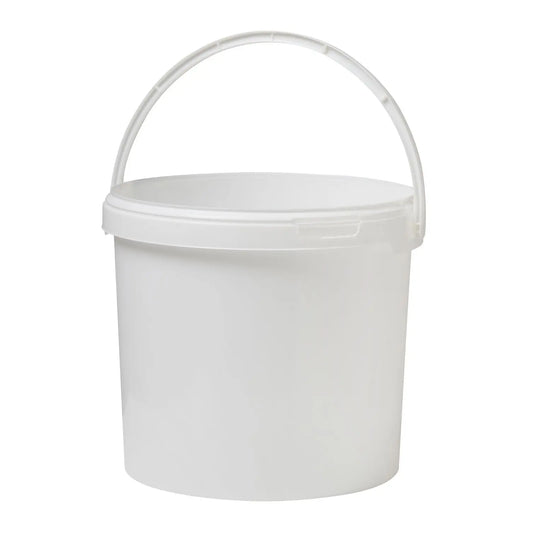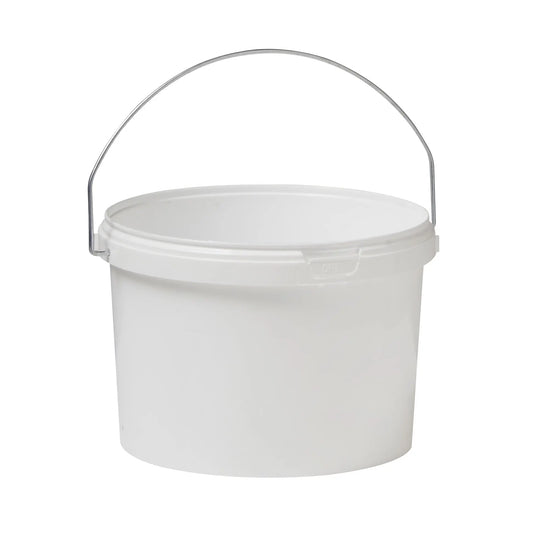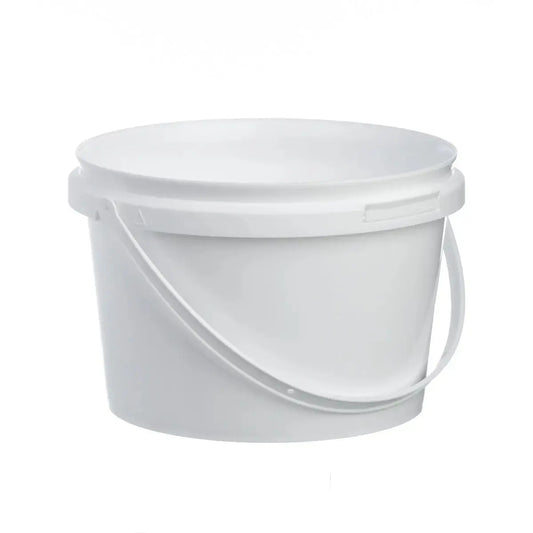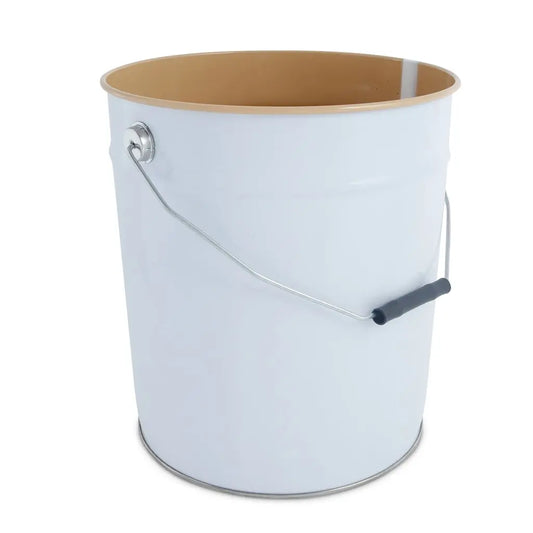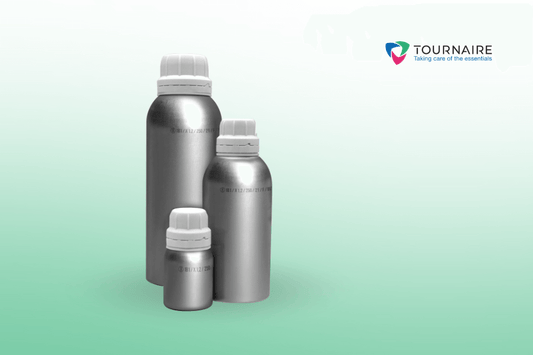Paint acts like a liquid but dries as a solid, so it has unique packaging requirements. Containers must be airtight so the paint does not dry out, and watertight so it does not escape. Metal paint cans and plastic buckets tick both boxes.
Invopak has been supplying metal and plastic containers to paints and coatings businesses for over fifty years, and we also produce paint tins in our factory in Manchester. In this article, we take a closer look at paint packaging, discover the benefits of different types, and help you decide which one is the best match for your business.
Why Are Plastic Buckets and Tins the Best Packaging for Paint?
Metal tins and plastic buckets dominate the market when it comes to paint packaging, and for good reason. They offer a practical, tried and trusted method of storing and shipping paint for manufacturers, wholesalers and retailers.
What are the benefits of metal packaging for paint?
Metal is the strongest packaging material. It has high puncture resistance, will not fracture or tear and is resistant to solvent and chemical corrosion, making it the ideal material for paint containers. Metal recycles forever, making it the most sustainable choice, too.
What are the benefits of plastic packaging for paint?
Plastic buckets and Paintainers are made from polypropylene PP plastic. This is a hard plastic which is light and strong, and it can be recycled after use. Plastic is cheaper than metal, which means that plastic paint containers are a more economical option than metal. Recycled plastic buckets and paintainers made from at least 30% recycled polymer are free from plastic tax, making them a cheaper and more sustainable choice than standard plastic.
Which Sizes Are Available?
Paint cans were standardised when Britain switched from imperial to metric measures in the 1970s. The can sizes were decided after consultation with The Paintmakers Association, and The British Tin Box Manufacturers Federation, as well as a survey of the European paint can market. This led to 1 litre, 2.5 litre, and 5 litre paint tins becoming the BSI standard for the UK, a standard which is still used today.
The standard metric paint tin sizes were introduced in the early 1970s
These 1, 2.5 and 5 litre tins hold the right quantity of paint for most retail and domestic uses. Smaller tins, such as 125ml, 250ml and 500ml, are ideal for sample sizes and specialist products that are used in smaller quantities.
At the other end of the scale are metal pails. These are metal containers designed to hold industrial quantities of paints and coatings. They are available in large sizes from 3 litres up to 25 litres and are UN certified for shipping and export.
Plastic buckets were first developed for use in the food industry, but their lightness, value and practicality mean they are also a popular choice for paint. They can be bought in the same sizes as paint tins, as well as larger sizes. 5 litre rectangular plastic buckets can be used with a roller, and they are available in 10 litre and 16-litre sizes too, making them ideal for professional use.
Which is Easier to Handle?
Lever lid tins were designed for paint. The design stretches back to 1877 and the dawn of premixed paint, when Henry Sherwin-Williams patented a new type of metal can. It had a flanged lid that was soft soldered on the can to provide a leakproof seal. The design has evolved since, but it still comprises a metal cylindrical container and a press-fit lid.
The original paint tin patent and tin
Plastic buckets are a newer type of paint packaging. They were launched to market in the 1960s. They were inexpensive, light and available in a variety of colours and shapes. They were ideal for industrial use, including construction, agriculture and food.
Plastic buckets are practical for paint rollers because they have a wide opening. Buckets have snap-on lids, which are easy to re-seal, making them ideal for larger quantities of paint that may be used more than once. Many plastic buckets come with wire handles that have a plastic roller grip, so they are comfortable and easy to carry.
In recent years, Paintainers have become an increasingly popular option. They offer the benefits of the classic paint can design, but are made of plastic, so they are lighter and cheaper than a metal tin. Recycled plastic Paintainers are exempt from plastic tax and are more sustainable, making them a tempting middle way for retail paint companies.
Paintainers, made from recycled plastic, are practical and sustainable
How Each Option Performs in Transport and Storage
Plastic buckets are lightweight, practical paint containers. They are airtight and watertight, and often come with a tamper-proof tab for an extra level of protection. Buckets are easy to stack, so they are space-efficient as well.
Lever lid paint tins are engineered for the safe shipping of paint. The rolled lip of the can fits the rounded groove in the lid to provide a secure push-fit. The metal lid can be put on using an automatic or manual lid press, or as part of a production-line process. Spring metal clips can be used to clamp the lid to the tin for an extra level of security. Once sealed, the lever lid tin protects the paint against air and moisture damage.
Rigid packaging offers a high level of protection for paint. Unlike flexible packaging, containers made from metal or hard plastic have high puncture resistance and excellent durability, making them the best types of containers for shipping and export. Metal cans and plastic buckets are ideal for commercial use. They protect the paint from air and moisture and keep the contents safe when shipped and stored in bulk.
Choosing Packaging That Fits Your End User
Plastic packaging is a practical option for water-based paints. Painters and decorators appreciate their easy sealing and lighter weight. Rectangular paint buckets sized to fit a paint roller avoid the need to decant the paint, making life quicker and easier for the end-user.
Solvent-based paints, primers and lacquers are typically best stored in metal tins due to metal's resistance to aggressive substances. If metal tins are used for water-based finishes, then a lacquered tin should be used. Metal cans offer a high degree of protection and an impression of quality, making them the preferred choice for premium paints
There is a range of options when it comes to sustainable paint packaging. Choosing recycled plastic buckets or recycled plastic Paintainers offers all the benefits of plastic packaging (weight and cost), more sustainably. But when it comes to sustainability, metal packaging is hard to beat. Metal recycles forever, with no loss of quality. When paint cans are melted down, any paint residue is burned off, returning the metal to its raw elemental state.
Make an Impact with Branding
Branded packaging can boost brand recognition and help to differentiate your business. It can also tempt new customers to try your product. Printed packaging can also display use instructions, product information and hazard data, a regulatory requirement for solvent-based products.
Industrial printing processes are applied at the manufacturing stage. They are hard-wearing and provide a more professional and time-efficient branding solution compared to adhesive labels. Industrial printing is the best option for large-scale production runs.
Metal paint tins are printed via the offset printing method (read all about the process here). Printing rollers are used to transfer the design onto the flat plate before the tin is formed. This offers a high-detail, consistent print that provides a quality finish.
Plastic buckets and paintainers can be branded via IML or in-mould labelling. Again, this is an industrial method that is part of the manufacturing process. The label is embedded into the plastic container as it is formed, becoming an integral part of the bucket. IML is waterproof and extremely durable with a photographic-quality print.
IML printed paint buckets make your paint stand out on the shelf
Whichever type of paint container is right for your product, branded packaging can help you stand out, build customer loyalty, and add value, enabling you to sell your product at a higher price point.
Regulations, Tamper Evidence, and Safety
Metal paint cans should have a well-fitting push-fit lid. Metal securing clips can provide an extra level of security when shipping paint. Buying cans from a reputable supplier means the tins will be properly made from quality tinplate, ensuring they are fit for purpose.
Most plastic buckets have tamper-evident tabs, a feature developed for the food industry, which is also useful for paint. The tamper-tab means the lid can not be removed without ripping the tab off, helping to prevent paint leaks when the buckets are transported.
Smaller paint quantities do not typically need to be packaged in UN approved containers, since they have LQ (limited quantity) exemption. However, large quantities of solvent-based paints and coatings should be stored in UN-approved packaging, such as metal pails and UN buckets.
UN buckets are typically thicker and have extra safety features, such as a double-locking rim, to prevent leaks. UN-approved metal pails are available in sizes from 3 to 25 litres. They are sealed with a metal pail ring that fastens the lid and pail tightly together for maximum shipping security.
Please get in touch if you need any product information, advice, or UN certificates.
UN approved tins being made at Invopak's factory in Manchester
How to choose the right paint packaging
The choice between metal and plastic paint packaging comes down to a few key factors.
Plastic paint buckets are:
- Great Value. A good option when price is a priority, e.g. economy and trade use.
- Light. Large plastic buckets are the lighter way to carry large volumes.
- Waterproof. Plastic does not rust, making it great for water-based products.
- Easy to use. Snap-on lids make it easy to re-seal the paint bucket between uses.
Metal paint cans are:
- Premium. Lends a sense of quality to premium paints.
- Ideal for solvents. Metal packaging does not degrade solvents
- Traditional. The original design classic.
- Sustainable. Metal recycles forever.
Please contact us if you have any questions or would like to discuss your requirements, or are interested in branded paint packaging. We're here to help.
